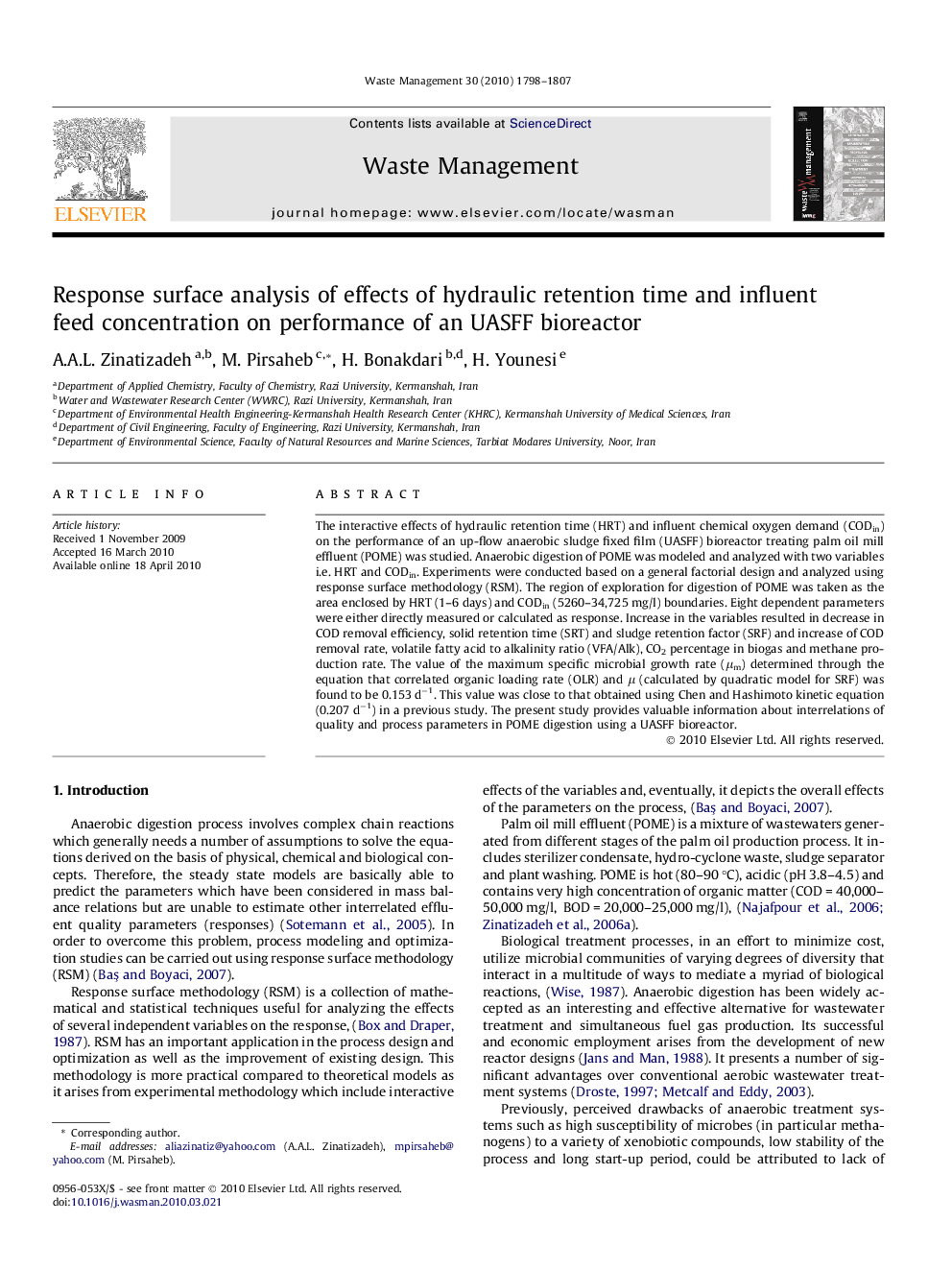| کد مقاله | کد نشریه | سال انتشار | مقاله انگلیسی | نسخه تمام متن |
|---|---|---|---|---|
| 4472685 | 1315075 | 2010 | 10 صفحه PDF | دانلود رایگان |

The interactive effects of hydraulic retention time (HRT) and influent chemical oxygen demand (CODin) on the performance of an up-flow anaerobic sludge fixed film (UASFF) bioreactor treating palm oil mill effluent (POME) was studied. Anaerobic digestion of POME was modeled and analyzed with two variables i.e. HRT and CODin. Experiments were conducted based on a general factorial design and analyzed using response surface methodology (RSM). The region of exploration for digestion of POME was taken as the area enclosed by HRT (1–6 days) and CODin (5260–34,725 mg/l) boundaries. Eight dependent parameters were either directly measured or calculated as response. Increase in the variables resulted in decrease in COD removal efficiency, solid retention time (SRT) and sludge retention factor (SRF) and increase of COD removal rate, volatile fatty acid to alkalinity ratio (VFA/Alk), CO2 percentage in biogas and methane production rate. The value of the maximum specific microbial growth rate (μm) determined through the equation that correlated organic loading rate (OLR) and μ (calculated by quadratic model for SRF) was found to be 0.153 d−1. This value was close to that obtained using Chen and Hashimoto kinetic equation (0.207 d−1) in a previous study. The present study provides valuable information about interrelations of quality and process parameters in POME digestion using a UASFF bioreactor.
Journal: Waste Management - Volume 30, Issue 10, October 2010, Pages 1798–1807